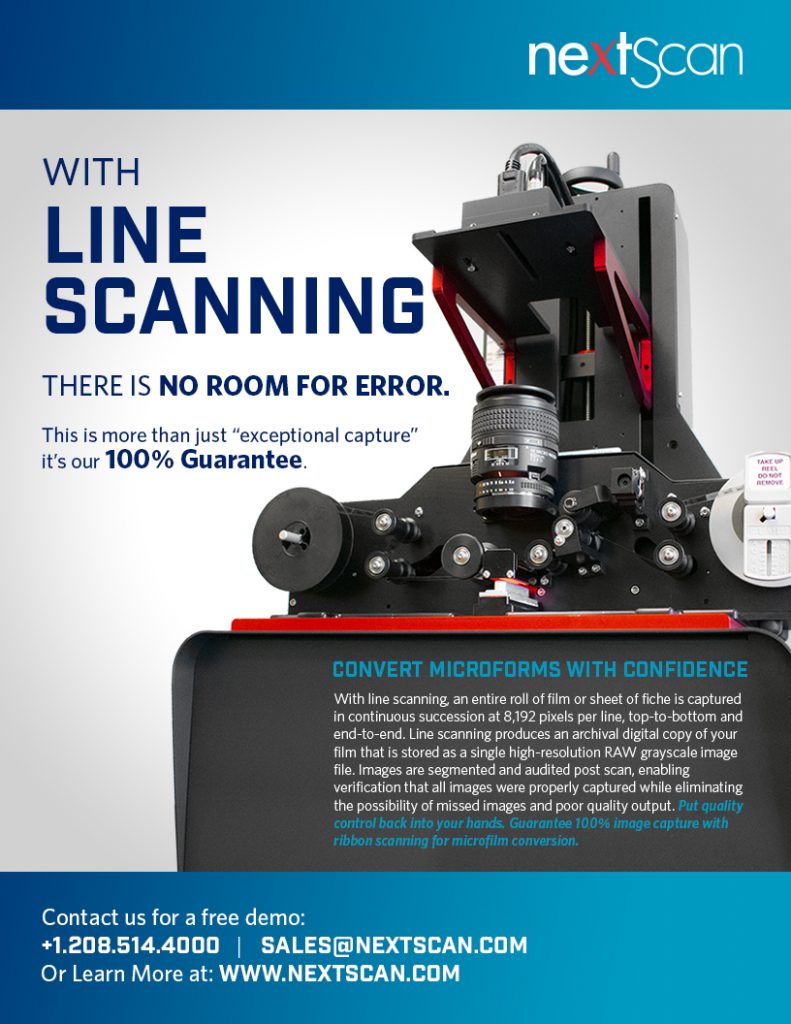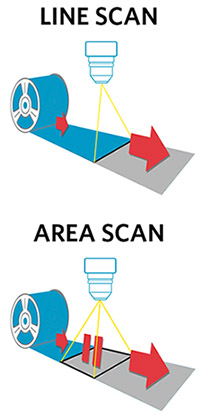Workflow For a Reason: Understanding the Process of Microfilm Conversion
Published inside the 2020 Fall issue of NIRMA Magazine.
By: Matt Anderson, VP of Marketing, nextScan
While you may think microform-capture is simple: Point, Shoot, and Capture; TRUE microform conversion is complicated. The engineers at nextScan have decades of combined experience scanning microforms. Over those years they have learned to streamline and perfect the conversion process rather than cut corners, literally.
First, all data must be captured and frames must be detected instantly. When we capture a roll of film we save it as RAW data allowing for maximum flexibility during the remaining operations. Next, a technician audits the scan to make sure all data has been collected properly, and then makes any necessary adjustments before indexing. And finally, we create a datafile to deliver a document when requested. So, why do we do it this way? When scanning thousands, or even millions of microfilm images, you cannot afford to miss a single one.
One Size Does Not Fit All
nextScan, along with ST Imaging, make up the microfilm division of Digital Check, the world’s leading manufacturer of check scanners. Not only are we experts in the field of microform capture but also check and other imaging. We offer many technologies with our scanning solutions, including Contact Image Sensors (CIS), Area Array Cameras, and Line Scan Sensors. We use CIS sensors in our check scanning products. We offer an Area Array Camera, which is like the camera in your cell phone, in our ViewScan 4 microfilm scanner. And we use a Line Scan Sensor is used on our high-speed capture scanners. One image sensor is not the best solution for all situations. Make sure you use the right tool for your job.

Advantages of Line Scanning Technology

For continuous, uninterrupted scanning of microforms, line scanning technology is superior. Line scanning involves precise strobe lighting to allow the line image sensor to capture every row of pixels, one at a time, as the film passes below. This ensures nothing is missed during the capture process.
And a RAW data file is best for capturing when using a line scan sensor because it stores every piece of data as the microfilm moves beneath the sensor. This RAW data can then be scrutinized, and any necessary adjustments can be applied before output. We all know microfilm documents are FAR from perfect. The RAW data file allows for further editing, such as brightness, contrast, straighten, and cropping before output. Skipping this step by directly outputting from capture forces file compression to maximize disk space which could result in lost information that could never be recovered.
Additionally, any number of file types can be built from the original RAW data file. This means that PDF, PDF/A, TIFF, JPEG, BMP, and many more types can be created providing maximum flexibility. Other solutions force users to determine the file type before conversion, severely limiting the user’s post-scan options.
Area Array Cameras
The Area Array Camera is a very good camera for single shot, stabilized capture. These are similar to the sensors found in your cell phone or digital camera. These cameras are ideal for taking still images and delivering high resolution images, which is why we use this style of camera in the ViewScan 4 on-demand microfilm scanner. However, any movement or vibration of the camera or microform may cause distortion to the image which can cause the image to appear smeared or to overlap resulting in poor image quality. You can see an example of this by taking a picture with your phone while moving it. That is not the kind of scan you want permanently in your archive.
Scan with the Conversion Experts
Every conversion project is important, vital even. Your records are important to us too. This is why we created a process that not only scans your microfilm quickly but also delivers perfect images with all being captured with complete confidence. Are you considering a conversion project? Let our experience help you convert your collection with confidence!
